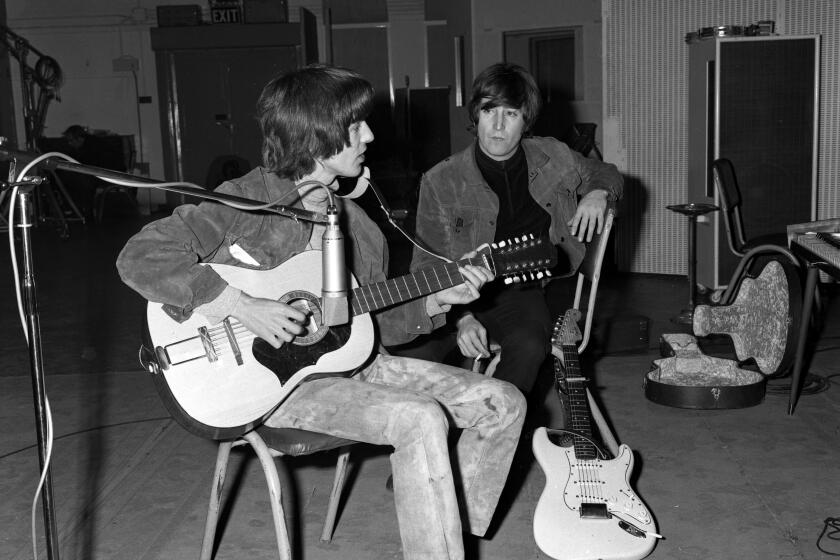Inmate’s Open Shunt Led to Bleeding Death
An autopsy of a Corcoran State Prison inmate who bled to death in his cell overnight on Super Bowl Sunday showed that his medical shunt was not fully closed, allowing blood to flow out of his jugular vein, authorities said.
The autopsy Thursday could not determine whether inmate Ronald Herrera, a 58-year-old dialysis patient, had opened the shunt’s clamp in a fit of anger, or if the medical staff responding to his screams administered a sedative through the shunt and had failed to close the device.
“That is one of the questions investigators will look at,” said Rene Hanavan, chief deputy coroner for Kings County. “The bleeding from the open dialysis shunt caused him to go into shock, and that shock caused his heart to beat in an irregular rhythm.”
On Friday, state Sen. Gloria Romero (D-Los Angeles), who recently co-chaired a series of legislative hearings critical of the prison system, called on Atty. Gen. Bill Lockyer to take over the investigation into what she called a “gruesome and completely avoidable” death.
Guards could be found criminally negligent if they were too busy watching the Super Bowl game to respond to Herrera’s repeated screams.
Romero questioned whether Kings County Dist. Atty. Ron Calhoun, who was elected in 1998 on the strength of financial backing from the state prison guards’ union, could conduct an independent probe of the local prison.
“A matter this serious demands an aggressive, independent investigation that will rise above political concerns or other factors that might compromise probes conducted at the local level,” Romero wrote to Lockyer.
A press spokesman for the attorney general said Romero’s letter had not crossed Lockyer’s desk, but “when it does, we’ll review it.”
Patrick Hart, Kings County’s chief deputy prosecutor, said a story on Herrera’s death in The Times on Thursday has complicated the investigation. He said correctional officers at Corcoran might use the story to claim facts about the incident that they did not observe. Hart would not give further details of the investigation.
The story appeared on the fourth day of the probe, after written reports and logs had been examined by county investigators and word had spread throughout the prison.
Two corrections officials provided The Times with an account of Herrera’s death on the condition that they not be named for fear of retaliation by superiors.
They said Herrera, a mentally ill burglar and rapist from Ventura County, began “ranting and raving” about midday Sunday. Prison medical staff members examined Herrera near halftime of the Super Bowl and may have given him medication to calm him, they said. But Herrera kept howling and kicking at the door throughout the evening.
At one point, they said, he began to cover the window in his cell with toilet paper soaked in his blood. More than one guard thought something was terribly wrong, the officials said, but Herrera was not checked again that night. Prison policy, they said, required that the cell door be opened as soon as Herrera blocked the view with the toilet paper.
“There are several notations from staff indicating concern for Herrera,” one official said. “But the superior officers never let them check on him.”
A female sergeant did check from outside the cell, but she told subordinates not to bother doing anything more, they said. “He’s not dead,” the sergeant was quoted by the officials as saying. “Just keep an eye on him.”
From one watch to the next, over a 10-hour period, Herrera continued to bleed from an opening in his shunt. It wasn’t until shortly after 6 a.m. that a guard who knew Herrera decided to check on him. A large pool that looked to the guard like “raspberry Kool-Aid” was streaming out of the cell. Inside, he found Herrera slumped over on the floor, the blood drained from his body.
At least one guard reported that the cap of the shunt was sitting on Herrera’s bunk, an official said. The chief deputy coroner said the rest of the shunt was attached to Herrera’s upper chest at the time of the autopsy.
“Nothing appeared to be malfunctioning with the shunt itself,” said Hanavan, the chief deputy coroner.
“But for whatever reason, the cap had been taken off one of the tubes and the clamp wasn’t squeezed shut. The opening allowed him to bleed. Right now, there’s not enough information to say whether it’s suicide or not.”
Judy Greenspan of California Prison Focus, a watchdog group based in San Francisco, said she has visited dozens of Corcoran inmates who were receiving dialysis treatment in recent years. Often, she said, the shunts put in by outside dialysis centers that contract with the state are defective.
“Most of the men I visited complained of having shunts that didn’t work. They had multiple operations to install new shunts, many of which still failed,” Greenspan said. “To me, it represented the continuing abysmal medical care at Corcoran.”
More to Read
Start your day right
Sign up for Essential California for news, features and recommendations from the L.A. Times and beyond in your inbox six days a week.
You may occasionally receive promotional content from the Los Angeles Times.






